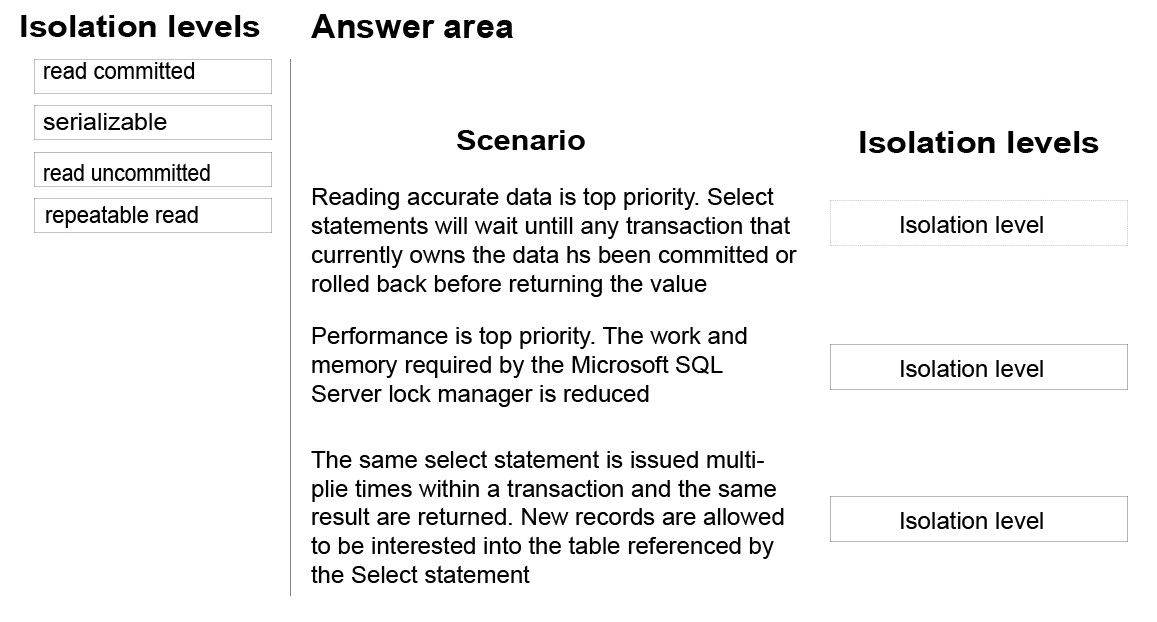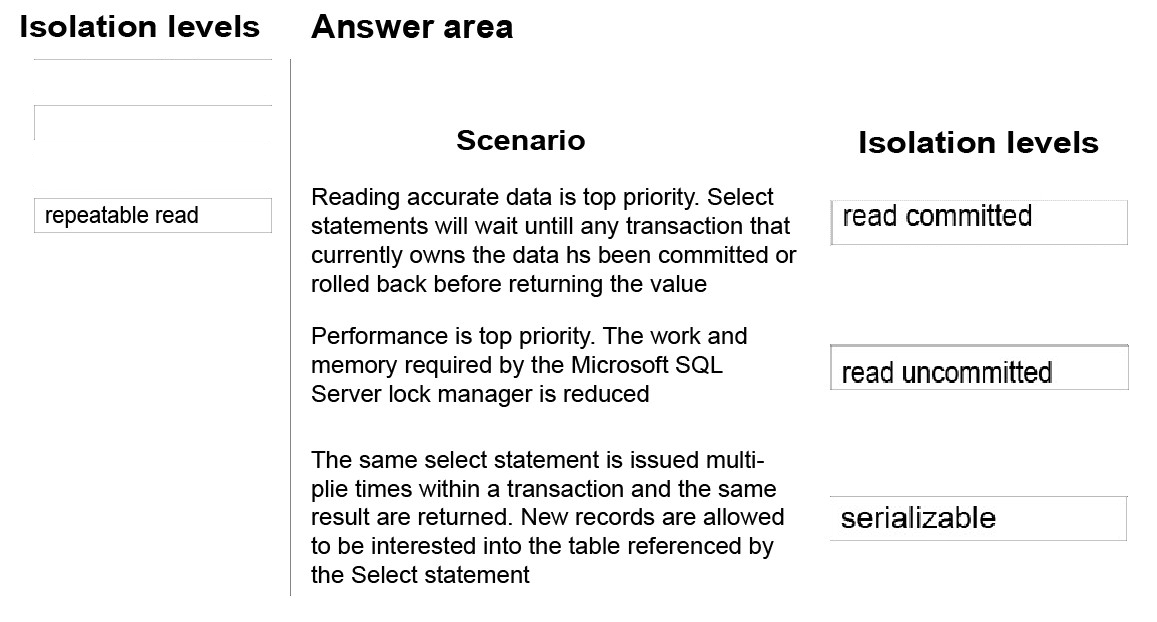

DRAG DROP -
You are evaluating the performance of a database environment.
You must avoid unnecessary locks and ensure that lost updates do not occur.
You need to choose the transaction isolation level for each data scenario.
Which isolation level should you use for each scenario? To answer, drag the appropriate isolation levels to the correct scenarios. Each isolation may be used once, more than once, or not at all. You may need to drag the split bar between panes or scroll to view content.
Select and Place:

gtc108
Highly Voted 5 years, 3 months agoNickname17
5 years, 2 months agoNickname17
5 years, 2 months agodelgadillo
4 years, 11 months agomoehijawe
Highly Voted 5 years, 4 months agoJohnFan
5 years, 3 months agoJohnFan
5 years, 3 months agoBabyBee
4 years, 5 months agoTheDUdeu
Most Recent 4 years, 6 months agoTinashe16
4 years, 6 months agoTinashe16
4 years, 6 months agoAndy7622
4 years, 9 months agosmartrammy
4 years, 9 months agoNickMane
4 years, 9 months agojulie2020
4 years, 10 months agostm22
4 years, 11 months agoLeonLeon
4 years, 11 months agomelvin9900
4 years, 10 months agoeggzamtaker
4 years, 5 months agostrikersree
4 years, 12 months agoTwigit
5 years, 4 months agoTwigit
5 years, 4 months agoClydeZ
5 years, 6 months agoBartek
5 years, 5 months agoJohnFan
5 years, 3 months agoJohnFan
5 years, 3 months agoJohnFan
5 years, 3 months ago